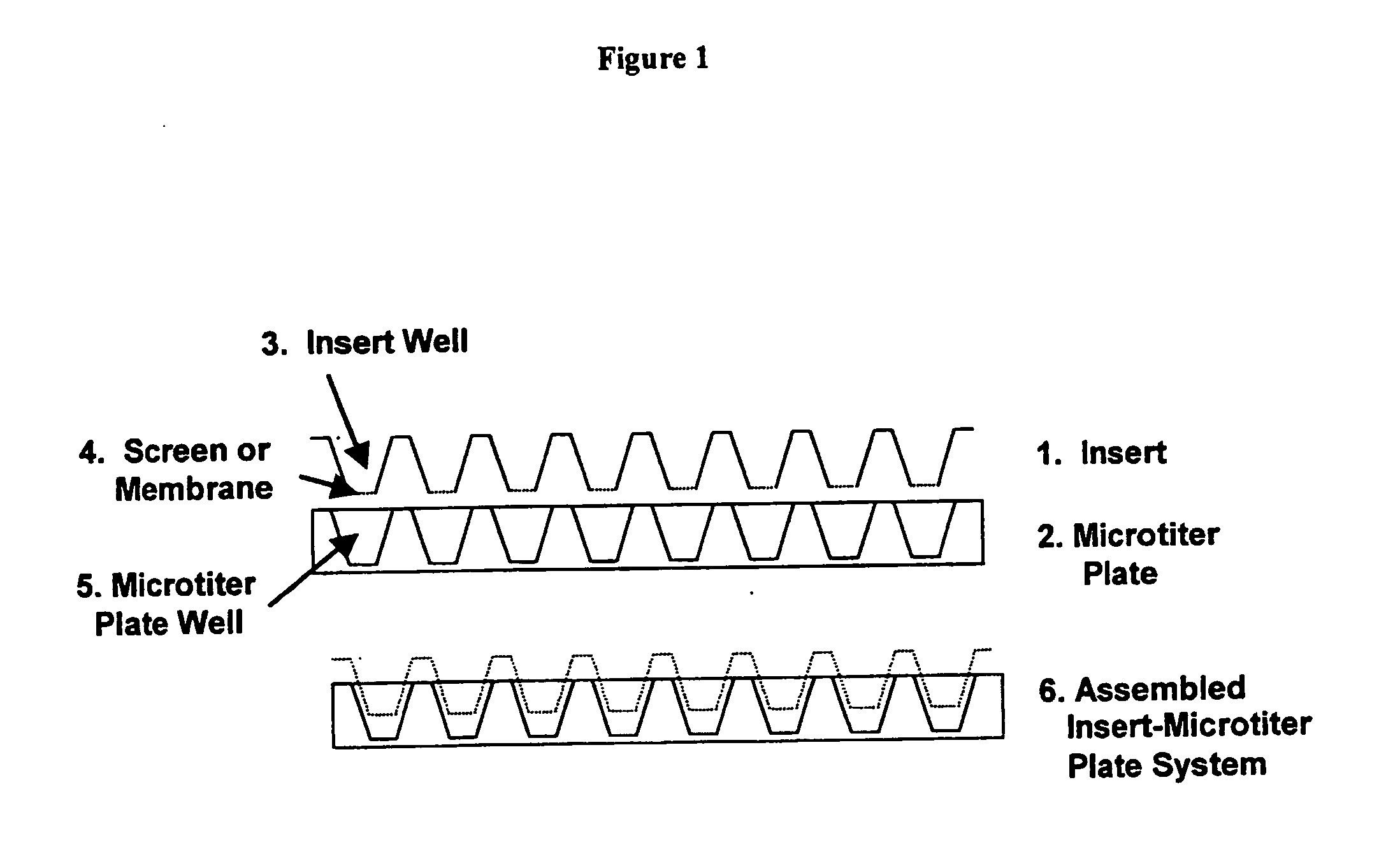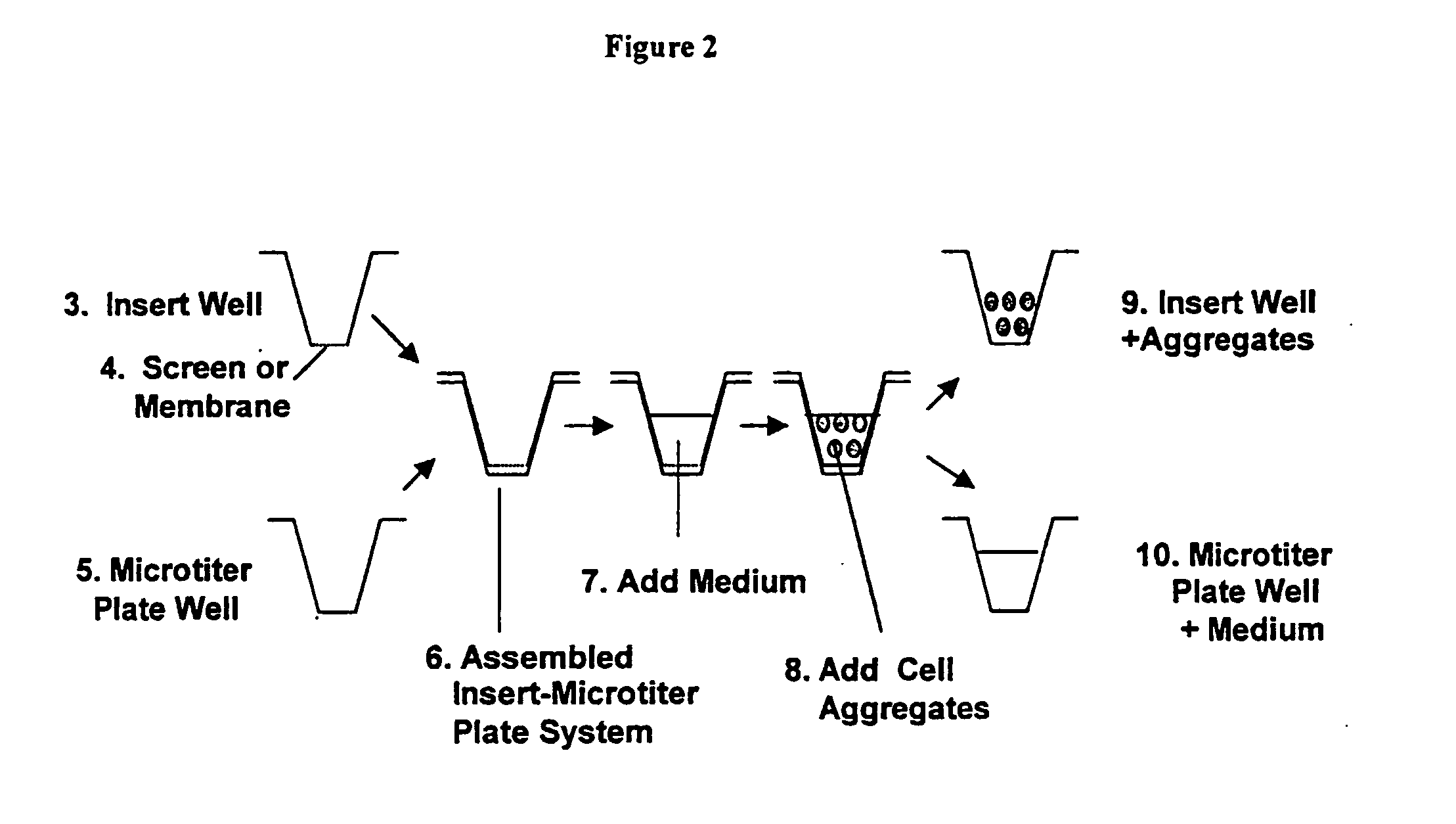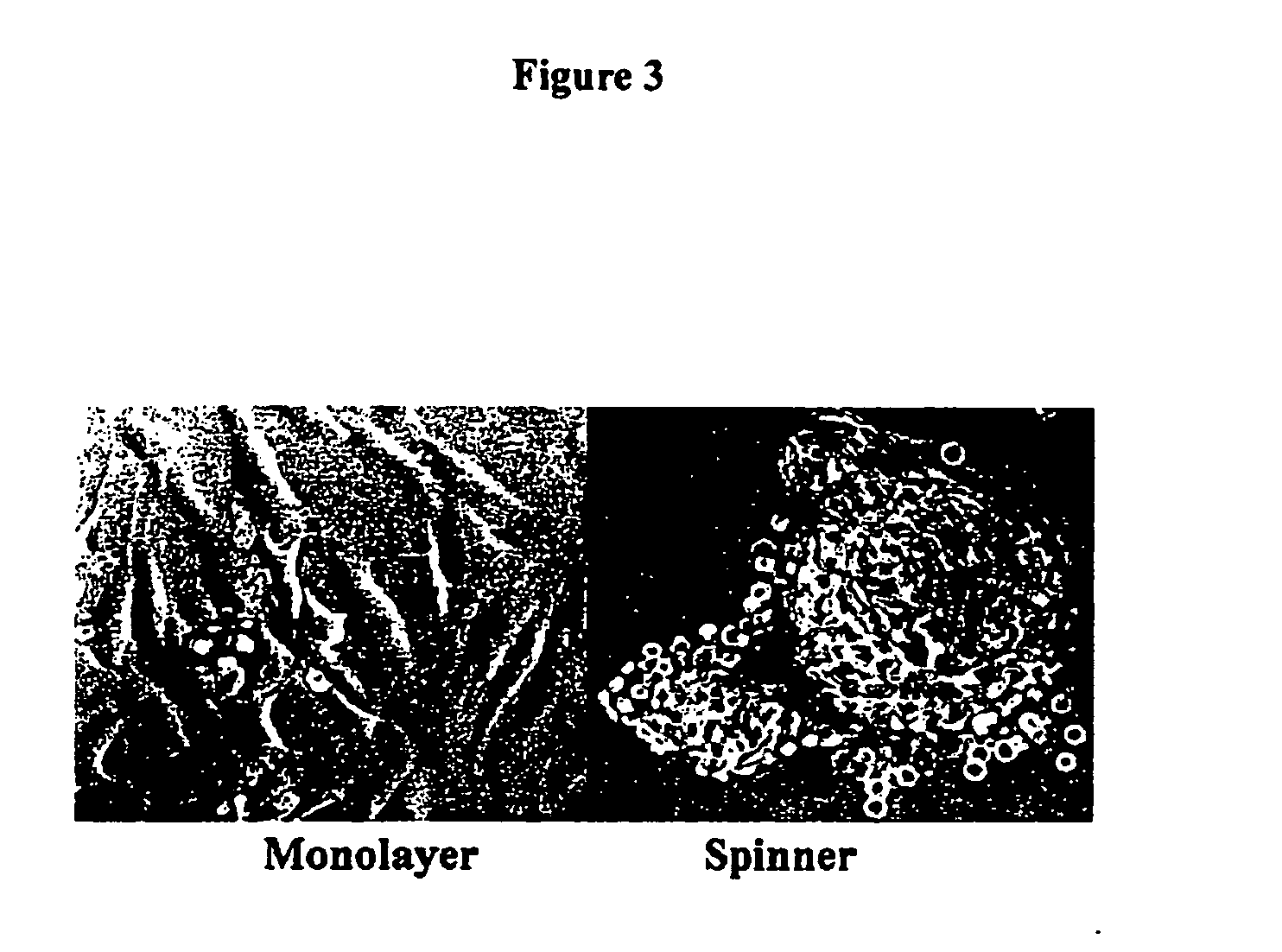Tissue analogs for in vitro testing and method of use therefor
- Summary
- Abstract
- Description
- Claims
- Application Information
AI Technical Summary
Benefits of technology
Problems solved by technology
Method used
Image
Examples
example 1
Preparation of Cartilage Analogs
[0106] Human nasal septum chondrocytes were isolated by collagenase digestion from tissue discarded following deviated septum reconstruction. The cells were seeded at 4×103 / cm2 in monolayer culture and propagated in HY medium (Hank's Balanced Salt Solution, HBSS+10% Fetal Calf Serum) until nearly confluent (about 2 weeks). Cells were harvested by trypsinization and seeded onto collagen microcarriers (4×103 cells / cm2 on Cellagen® beads, ICN, Cleveland, Ohio). The cultures (P3) were incubated for 5 to 15 days at 37° C., 5% CO2. These chondrocyte-microcarrier-ECM aggregates are referred to as “cartilage analogs”.
[0107] Chondrocytes directly propagated in microcarrier spinner culture (primary cultures) retain their expression of type II collagen and aggrecan [1]. In contrast, matched chondrocytes propagated in monolayer culture decrease production of type II collagen while increasing their production of type I collagen. Furthermore, dedifferentiated cho...
example 2
Preparation of Bone Analogs
[0115] Human trabecular bone-derived osteoblasts were isolated by collagenase digestion from tissue discarded following hip or knee reconstruction. The cells were seeded at 4×103 / cm2 in monolayer culture and propagated in HY medium (Hank's Balanced Salt Solution, HBSS+10% Fetal Calf Serum) until nearly confluent (about 2 weeks). Cells were harvested by trypsinization and seeded onto collagen microcarriers (4×103 / cm2 on Cellagen® beads, ICN, Cleveland, Ohio). The cultures (P3) were incubated for 5 to 15 days at 37° C., 5% CO2. After 15 days, osteoblasts were recovered from microcarrier cultures and were reseeded (4×103 / cm2) onto microcarriers for 5 to 15 days (P4). These P3 or P4 osteoblast-microcarrier-ECM aggregates are referred to as “bone analogs”.
[0116] After the culture period, the supernatant was removed and saved in microcentrifuge tubes for osteocalcin determination. DNA synthesis rates were determined by labeling the cells with 1 μCi / well of 3H-...
example 3
Preparation of Mesenchyme Analogs
[0118] Human Mesenchymal Stem Cells (hMSCs) were harvested by trypsinization from 4 flasks. 4.0 million hMSCs were seeded into a spinner culture reactor containing 1000 cm2 of microcarrier (Cellagen) surface area (4 thousand cells per cm2) in 120 ml of hMSC culture medium. On days 7 and 14, 10 ml of suspension was withdrawn from the spinner culture and frozen. Cell counts from spinner cultures on days 7 and 14 were 5.3 and 12.8 thousand cells per cm2, respectively. HMSCs on some microcarrier beads were nearly confluent by day 7. RT-PCR on samples from spinner cultures from day 14 was consistent with expected hMSC profiles (positive for type I collagen and aggrecan; negative for type II collagen). Day 14 aggregates are suitable as Mesenchyme Analogs.
PUM
 Login to View More
Login to View More Abstract
Description
Claims
Application Information
 Login to View More
Login to View More - R&D
- Intellectual Property
- Life Sciences
- Materials
- Tech Scout
- Unparalleled Data Quality
- Higher Quality Content
- 60% Fewer Hallucinations
Browse by: Latest US Patents, China's latest patents, Technical Efficacy Thesaurus, Application Domain, Technology Topic, Popular Technical Reports.
© 2025 PatSnap. All rights reserved.Legal|Privacy policy|Modern Slavery Act Transparency Statement|Sitemap|About US| Contact US: help@patsnap.com



